Kale has been a staple in my kitchen for as long as I can remember. From Kale Pineapple Smoothie to Kale Apple Slaw to Tuscan Kale Soup, you can do just about anything with one of the best green vegetables.
While many of my recipes feature curly kale, this ultimate guide covers the delicious – and sometimes unheard-of – different varieties of kale to put to good use in the kitchen.
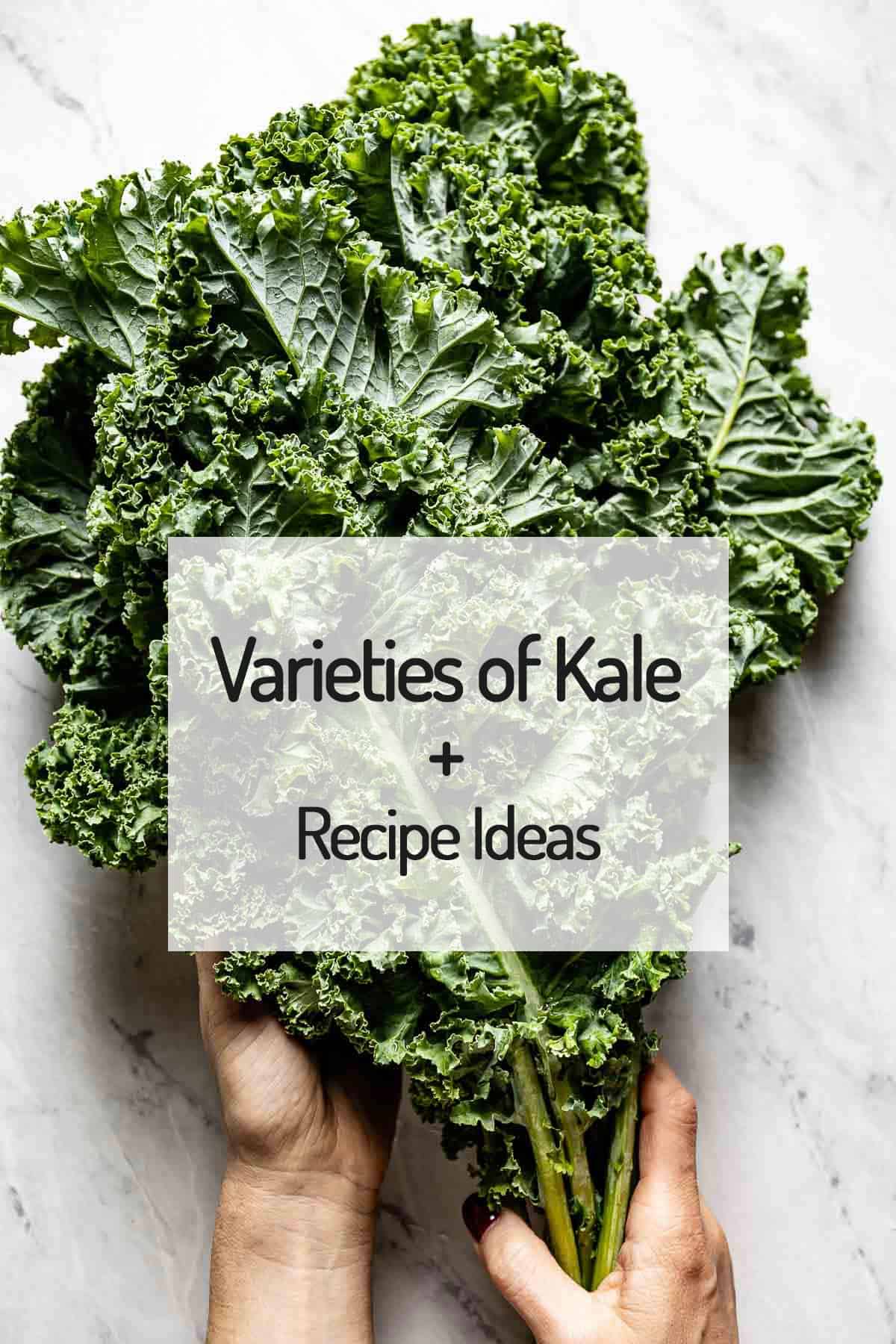
What is Kale?
Kale is a type of vegetable that is a member of cruciferous vegetables, including broccoli, cauliflower, cabbage, Brussels sprouts, Asian greens and more.
The botanical name for kale is Brassica oleracea acephala, which literally means “cabbage without a head.”
It is a cold-weather vegetable that thrives in cold temperatures, which is why many kale recipes pop up in the fall and winter. From dark green leaves to purple leaves, pebbly flat leaves to smooth leaves, kale plants are a thing of beauty.
Most Common Kale Varieties
There are so many types and varieties of kale, sometimes it’s hard to keep track. The following are the ones that are easy to spot in the grocery store, farmers’ market, or specialty food stores, among those not sold commercially:
Curly Kale

Undoubtedly the most common type of kale, curly kale has tight, curly edges and a bitter, peppery flavor. The color can range from light-dark green to blue-green leaves to purple colored kale. It is also super versatile, as it can be blanched, boiled, roasted, steamed, or eaten raw.
Lacinato Kale
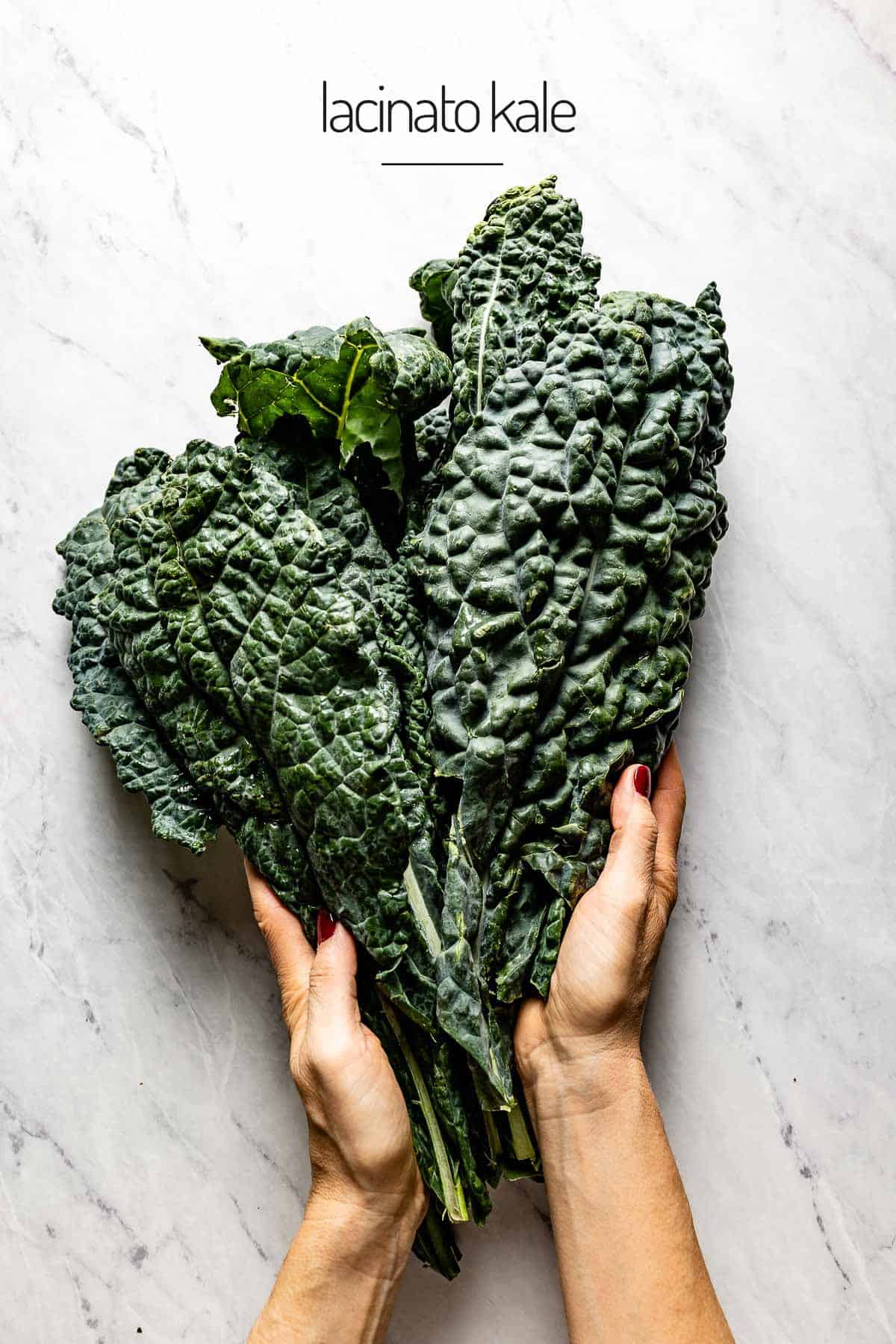
Lacinato kale, also known as Tuscan, dinosaur kale (or dino kale), Italian kale, black palm, palm, and black kale, has a deep green color, pebbly skin, and soft, flat, elongated leaves. It is native to Italy (with darker varieties called “cavolo nero”), with a much sweeter and milder flavor. The stems are also softer and thinner and can be enjoyed right along with the leaves.
This flat leaf kale variety stands up to longer cooking times and is the one I use in my Tuscan Kale Soup recipe.
Chinese Kale
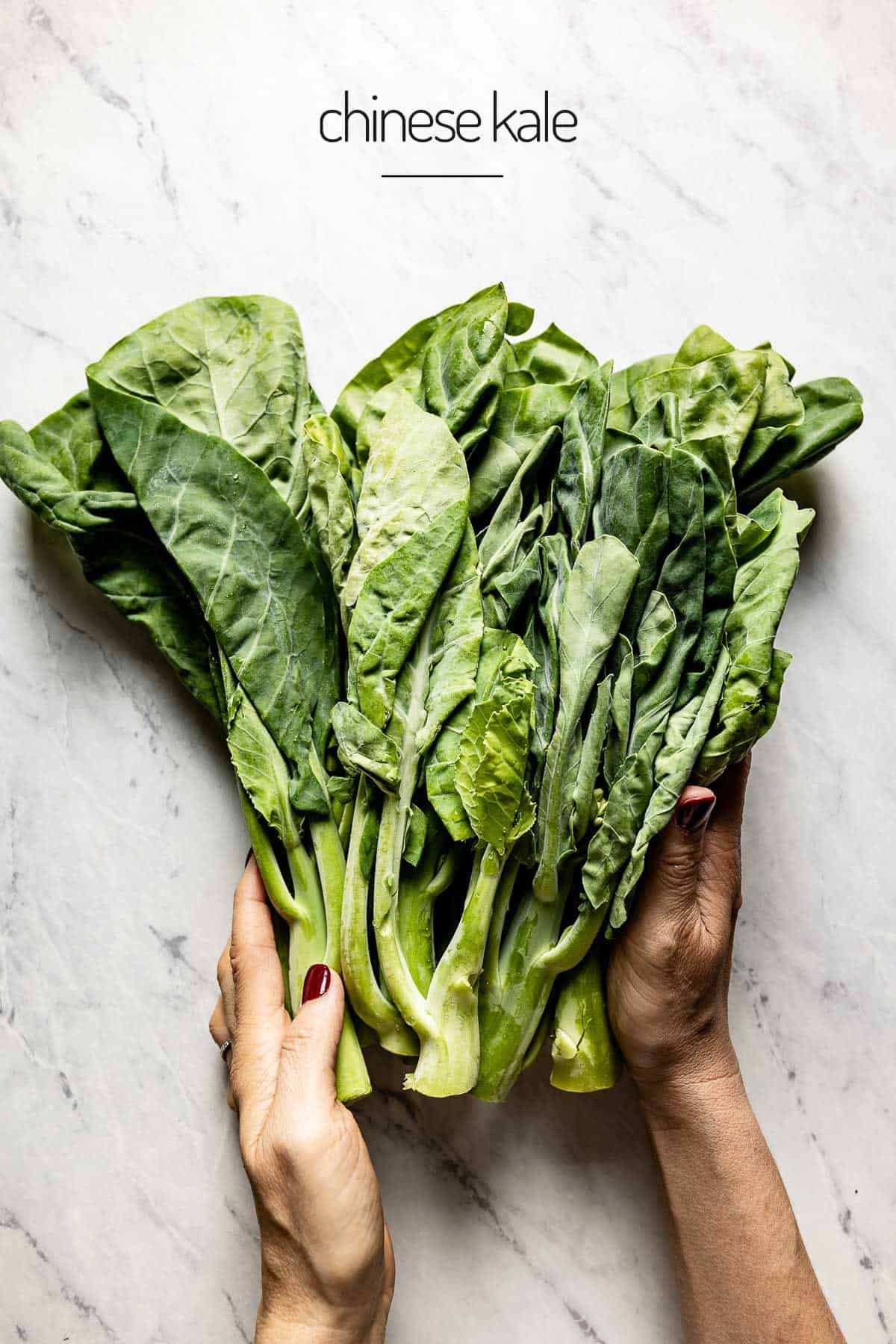
Chinese kale, commonly referred to as Chinese broccoli or gai lan, has large, glossy, crisp leaves and a thick stalk. Both the leaves and stalk are completely edible, along with small yellow flowers that are sometimes attached, but the stalks will take longer to cook than the leaves.
This type of kale is best enjoyed stir-fried with matching Asian flavors and is easy to find in Asian supermarkets. This Chinese Broccoli Stir Fry is my go-to recipe for this type of kale.
Red Russian
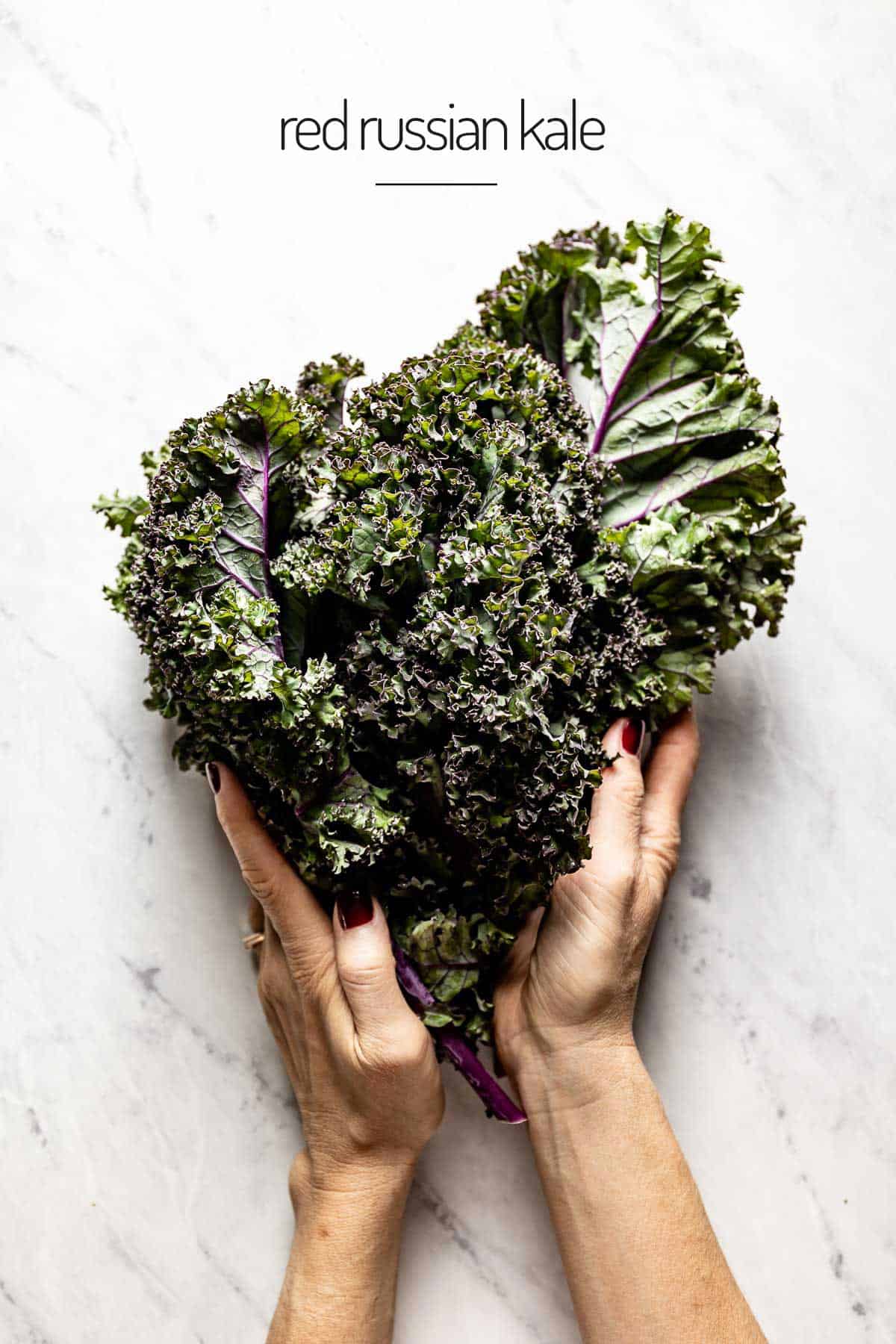
Red Russian, sometimes labeled Canadian broccoli, is a purple-stemmed kale with flat, wide leaves and craggly edges. The purple stems are somewhat fibrous, so it’s best to remove them. That being said, the leaves have a mild, sweet, earthy flavor, which makes them a good choice to toss into salads.
Since the leaves of Red Russian Kale are on the tougher side, I give them a quick massage before using it in salads. If you are new to this process, be sure to check out my guide on How To Massage Kale.
Redbor Kale
Redbor is unique in that it is not green but more like a deep purple akin to blueberries. The color is thanks to anthocyanins, antioxidants found in many blue and purple foods. Its flavor is similar to that of cabbage and can be eaten raw and cooked.
It’s important to note, however, that while the color will fade with cooking, the mild, sweet flavors will shine through.
Baby Kale
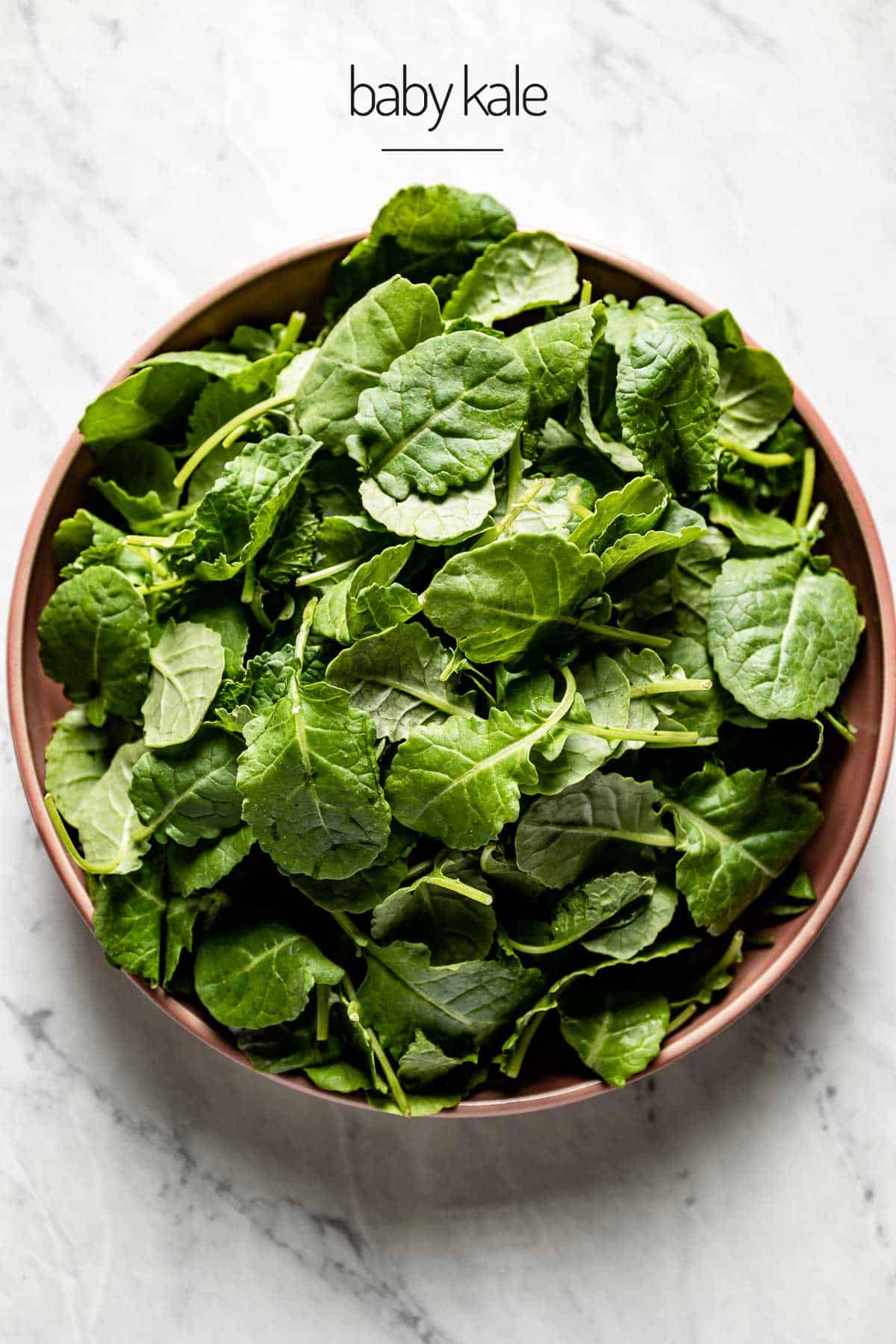
Baby kale is younger leaves that have been harvested before maturity. They are small, tender, light green leaves with a mild, peppery bite similar to baby arugula. Because it has such a sweet flavor compared to mature plants, baby kale is a great way to introduce kale into your diet. Baby kale is best consumed in raw salads, such as this Baby Kale Salad, or whizzed into a pesto.
Ornamental
Ornamental kale is a gardener’s dream and those frilly, colorful, tightly woven bunches you see in many people’s backyards as an ornamental plant. It can range in colors from white, pink, purple, red, and green.
While it is edible, the flavor is incredibly bitter and nowhere as complex as other varieties. Therefore, it is mostly planted by gardeners to add some color to their fall and winter landscape.
Different Types of Kale Versus Curly Kale
It is no secret that amongst all types of kale varieties, the easiest one to find is green curly kale, so I thought it would be great to give you a quick comparison between curly kale and the other types of kale mentioned in this article.
- Lacinato Kale vs Kale: Lacinato kale is deep green-blue with flat, soft, pebbly leaves similar to that of a dinosaur (and partly how it got its name). Compared to curly kale, the leaves are smooth and dark green.
- Chinese Kale vs Kale: Large, glossy leaves with a very thick stem. It has a totally different look compared to curly kale with larger and smoother leaves.
- Red Kale vs Kale: Purple to red leaves, with the stem ranging from vibrant purple to deep red. It looks similar to curly kale, but has a darker color and a heartier texture.
- Baby Kale vs Kale: Small, tender, soft baby leaves, similar in size to baby spinach.
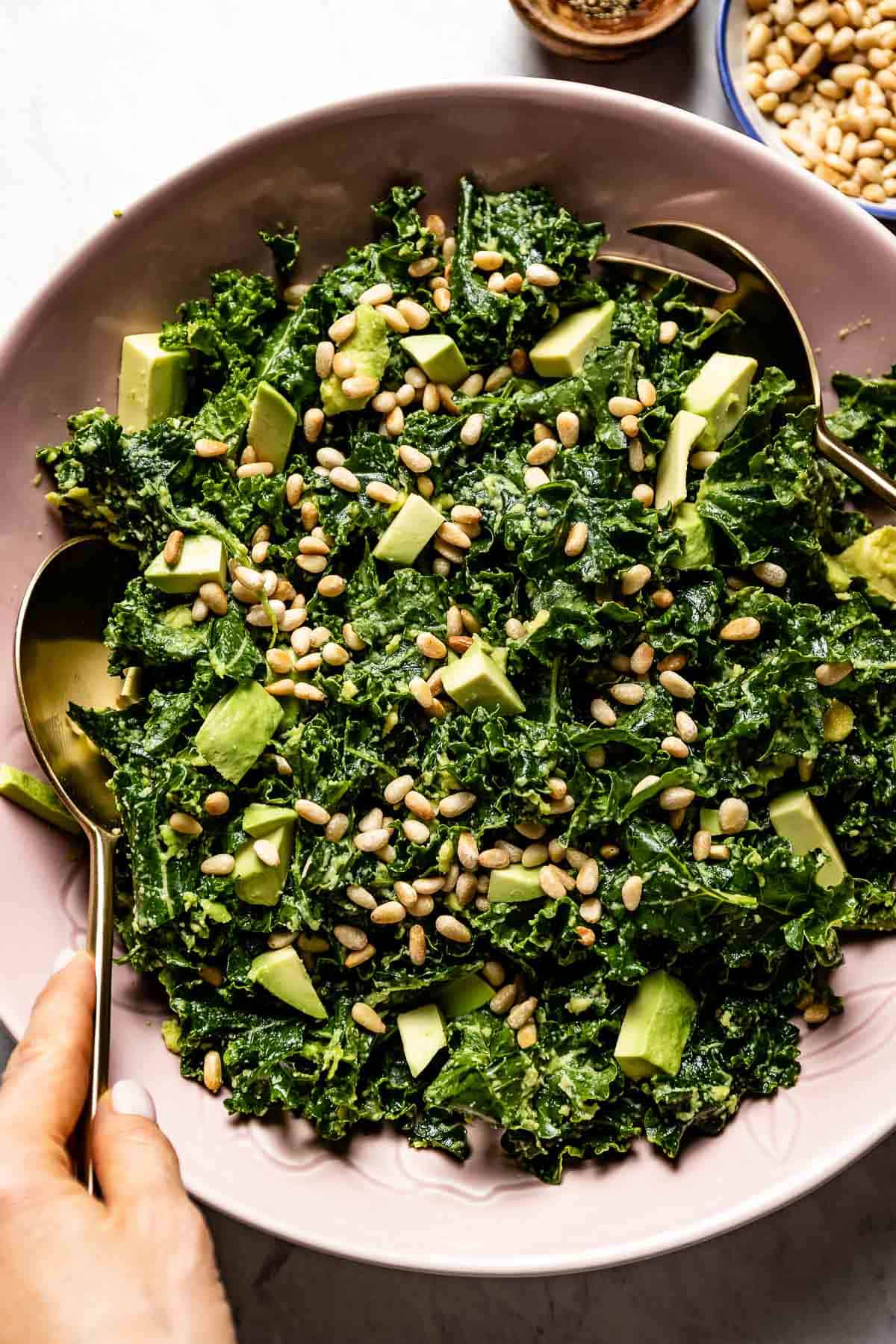
Types of Kale Chart
Here is a breakdown of the unique types of kale greens in an easy-to-understand chart:
| Variety of Kale | Looks Like | Tastes Like | Best Used For |
|---|---|---|---|
| Curly | Light green, curly-edged leaves with fibrous stem | Peppery and Bitter | Salads, Slaws, Soup, Sauteed, Roasted, Blanched, Steamed |
| Lacinato (Tuscan, Dinosaur, Black Kale, Cavolo Nero) | Deep green, flat, elongated, pebbled leaves, soft stems | Sweet and Mild | Soups, Stews, Pasta |
| Chinese | Light green, large, glossy leaves with thick stalk | Broccoli, Bitter | Stir Fry |
| Red Russian | Flat, wide leaves with craggy edges, vibrant purple stem | Mild, Sweet, and Earthy | Salads |
| Redbor | Tight curly leaves, deep blue-purple color | Cabbage, Mild, Sweet | Salads, Sauteed, Roasted, Blanched, Steamed |
| Baby Kale | Light green with hints of purple, small, tender leaves | Mild and Sweet | Salads, Smoothies, Soups, Pasta, Pesto |
| Ornamental | Range of colors with frilly leaves, tightly woven bunch | Bitter | Edible, but not ideal for cooking |
How to Use Kale
Now that you know all different kinds of kale, here are some ideas to put them to good use in your daily cooking and which variety to use based on the dish you are making:

- Best Kale for Soup: Tuscan kale is a great choice for soup since it has the ability to stand up to longer cooking times. I love it in Tuscan Soup with Kale and Chicken Vegetable Soup. With that being said, the most common curly kale would also be a great one to use in soups.
- Best Tasting Kale: This is more about personal preference, but I love the taste of both Tuscan kale and curly kale. I also think that they offer a mild flavor without taking over the whole dish when mixed in with other vegetables (and fruits). My Kale Apple Slaw and Brussels Sprout Kale Salad are good examples.
- Best Kale for Juicing: Curly kale, baby kale, or Red Russian kale are best for juicing as they are mild in flavor.
- Best Kale for Smoothies: This could be red kale or baby kale, both are just as mild and sweet. I always reach for one of these kale varieties when making Kale Pineapple Smoothie recipe.
- Best Kale for Salads: You can use curly, Redbor, Red Russian or baby kale in salads such as Kale Avocado Salad, Kale Quinoa Salad or Harvest Kale Salad. Just make sure to massage the leaves with some lemon or citrus juice beforehand, baby kale being the exception.
- Best Kale for Roasting: Curly kale is the go-to and makes seriously addicting Garlic Kale Chips in no time.
- Best Kale for Versatility: Whether you want to roast, saute, steam, blanch or boil, the universal kale is curly kale. I love it steamed in this Zucchini Fettuccine with Kale, among so many other preparations.
Health Benefits of Kale
Kale is a nutrient powerhouse, and it is considered as one of the most nutrient-dense foods in the world. The list of the health benefits of kale is long, but here are the most noteworthy ones according to Healthline:
- Extremely nutrient dense: Kale is very high in vitamins A, C and K and very low in calories, deeming it a superfood.
- High in antioxidants: Kale packs in plenty of plant-powered flavonoids like beta-carotene, quercetin and kaempferol, which are heart-healthy and have been shown to help lower blood pressure.
- Good for cholesterol: Steamed kale binds more bile acid and can improve the ratio of HDL vs LDL cholesterol in your body.
- Mineral rich: Kale is high in essential minerals and electrolytes, including calcium, magnesium and potassium.
- Fiber rich: Kale is incredibly high in fiber and water, which can help you stay full longer.
FAQs
Kale comes in all different shapes, sizes and colors. It is mostly associated with curly leaves and tough stems in green, red and purple hues.
While it is undetermined the exact number of different types of kale, the most common types include a list of 10-15 varieties.
The sweetest kale is red kale, or Red Russian. This makes it great for raw preparations, like tossing into salads.
Baby kale is simply young kale leaves that have been picked at an early stage. They are smaller, sweeter and milder than mature kale.
Kale is best identified as a cruciferous vegetable with light green to red to deep green-blue leaves that are either flat or curly, with a thick, fibrous stem.
According to this article on nutritional information on curly kale and this article on baby kale, baby kale packs in a similar amount of nutritional value as regular kale. The bonus of using baby kale is that it cooks faster, and there is no need to remove the stems.
More Helpful Kale Articles
Can’t get enough of this superfood? If so, you are in the right place. Below you can find my other kale-related articles to help you master your cooking with this healthy vegetable.
- How to Store Kale: Learn how to store kale in the fridge for short term storage or in the freezer for long term storage with this foolproof guide to storing kale.
- How to Cut Kale: Learn how to wash, dry, and chop kale for cooking with these easy steps.
- Blanched Kale: Blanching kale is an easy way to tame the bitter flavors and soften the texture of kale. Plus, if you are planning to freeze kale for long term storage, it is ideal to blanch it beforehand.
- Massaged Kale: Massaging kale with just a few simple ingredients ( i.e. olive oil, lemon juice, and salt) is an easy way to make it softer and palatable, especially when using it in salads.
If you find this guide on Types of Kale or any one of our other How-To Guides on Foolproof Living helpful, please take a minute to leave a rating and a review. Doing so helps others who are planning to follow the processes outlined in this post.

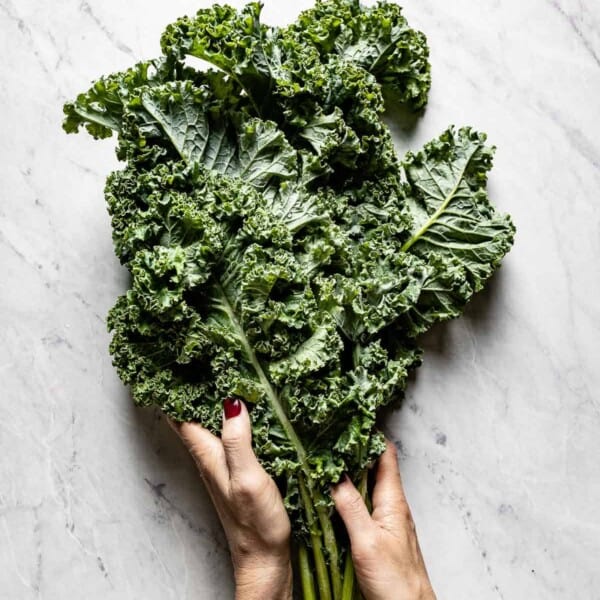
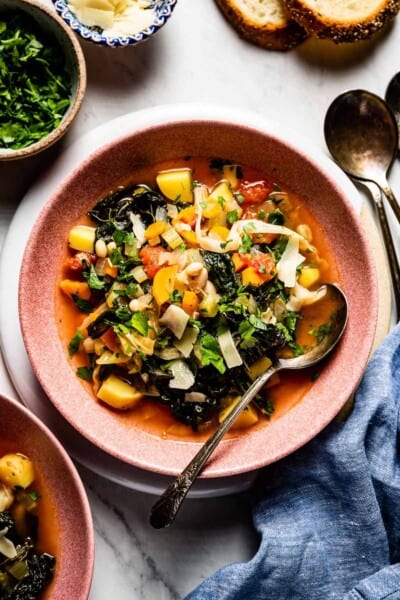
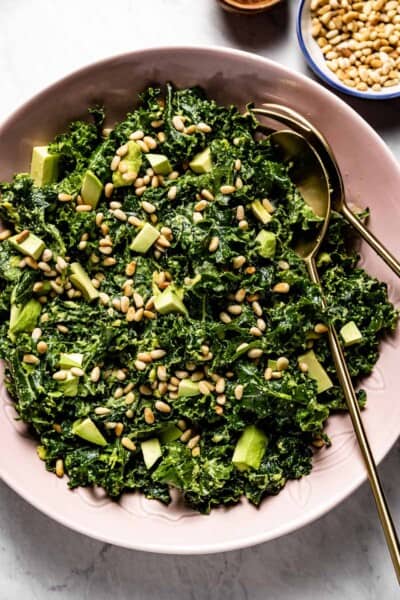
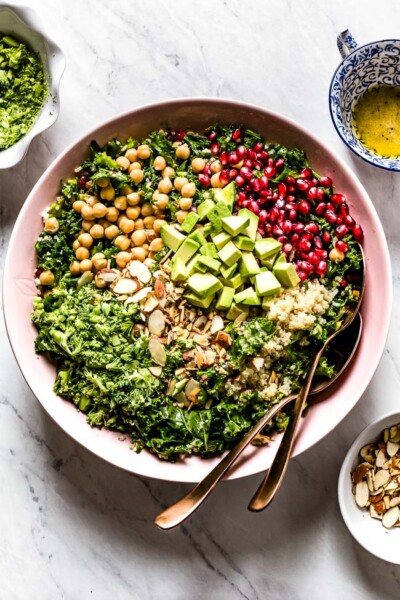

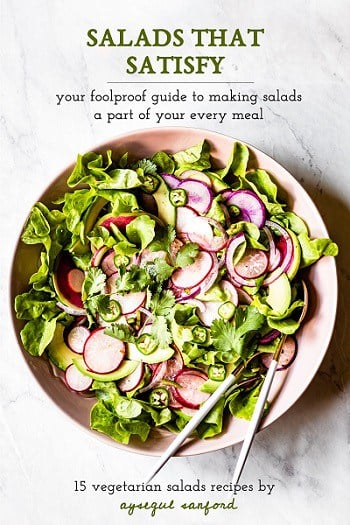

Dwight Sanford
I have been a fan of Kale for awhile, or least I thought I was. I had no idea of the amount of different types of Kale there are. I am thoroughly impressed with your ability to expand upon your knowledge about this super food, yet make it so easy to digest (pun intended). Can’t wait to try more.
Aysegul Sanford
Happy to hear that you found it helpful.